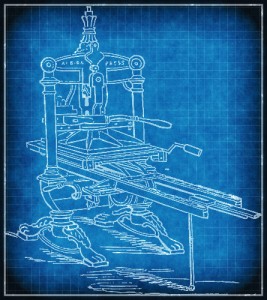How to build a better journalism school: Part 1, the core curriculum
Many journalism schools are reconsidering their curricula, trying to adapt to industry changes. Much of the discussion has focused on technology and entrepreneurial skills. Over the next several posts, I will propose and defend an alternative approach.
To start, here’s how I would set up the core of an undergraduate journalism program designed to be useful and relevant, not only today but for some time to come.
Facts: The initial course would cover how to find and evaluate facts. Students would learn basic research and interviewing skills and work with databases. On the theoretical side, they would discuss the distinctions among truth, accuracy and fairness. The course would include libel and copyright law — not a historical approach, but a practical summary of current law.
Grammars: The generic meaning of “grammar” is the basic elements of a skill. That’s the sense used here, although the course would include the more usual meaning related to writing. Students would learn the basic elements of writing, audio, video, social media and data visualization. Update: I should have added “photo” here and in every place below where I talk about modes of presentation.
Storytelling I: Working individually, students would learn basic story forms in writing, audio, video and data visualization. They would be expected to use the skills acquired in their preliminary classes to find facts and produce technically sound presentations — proper English, images in focus, etc. — while learning how to use each mode of delivery on its own and in combination to tell a variety of true stories.
Breaking news: Working as a team, students would learn to follow a story from a fragmentary initial report to additional details, sidebars and backgrounders. They would learn how to deal with incomplete and contradictory information, how to engage with readers, how to keep a story alive through multiple news cycles, and how to develop features and investigative follow-ups.
The history of ethics: Students would learn how American journalism developed, how ethics codes have changed over time, and how U.S. standards differ from those in other countries. The goal will not be to send them out with one predetermined ethics code, but rather to give them the background and tools to develop their own or adapt to those of their future employers.
Truth: Students would build on the fact-finding tools they acquired in the initial Facts course, but with a greater emphasis on using those tools to rid their reporting of false objectivity. They will study fact-checking and falsehood-fighting operations both traditional and not: PolitiFact, The Daily Show, Science-Based Medicine.
Storytelling II: In this capstone course, students would work in teams to produce a mix of short- and long-form reporting in multiple modes based on original reporting. (Note: “Capstone” is education-speak for the final course students take in a program, generally one designed to draw on all the knowledge and skills acquired up to that point and to demonstrate students’ mastery of the subject.)
These seven courses would be the core curriculum; every student in the journalism school would take them. In addition, each student would take at least four additional journalism classes, two focusing on individual presentation modes and two on specific topics.
Presentation: A student might choose to focus on broadcast, adding a course in production and a course in advanced techniques; or she might select one course in photography and one in app production.
Topics: Again, students could either specialize in one topic (sports, business, politics, etc.) or mix and match. However, one of the courses would have to focus on beat reporting and one on in-depth reporting.
In addition to reading about others’ proposals for curriculum changes, I’ve reviewed the current curricula of about 20 top undergraduate journalism programs across the country. The typical current curriculum consists of core courses in history, law and ethics, along with some combination of writing and reporting, and a tacked-on class most often called “multimedia storytelling.” In many cases, the writing/reporting courses aren’t really core; they are divided up based on the particular mode of presentation a student pursues.
The key difference in my proposed program is that students spend much less time in the silos of print, online, broadcast, photo, etc. I’ll talk about why that’s important — and other factors in my proposed curriculum — in future posts.
Disclosure: I’m the product of a traditional journalism program at Northwestern University. I have taught in Kent State’s journalism school, and am scheduled to continue teaching this fall (including a multimedia storytelling course). Kent State is one of the schools currently reviewing and revising its curriculum, but I have no formal input into that process and, of course, the views here are my own and don’t necessarily reflect those of the school or other members of its faculty.
This is the first in a series about improving journalism education.

